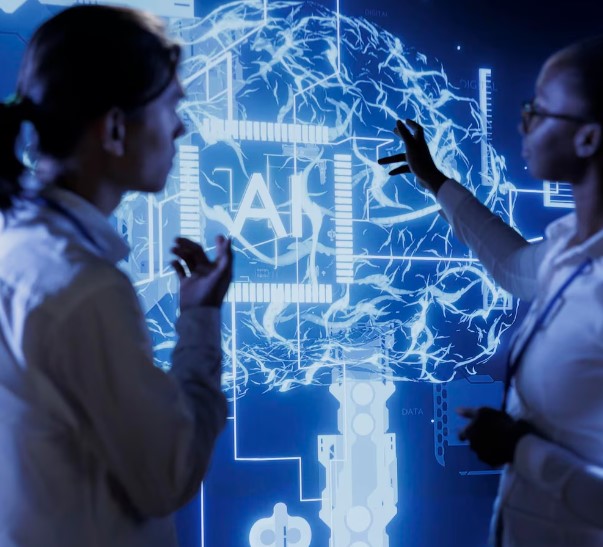
AI Breakthrough
In a landmark development, researchers in the field of artificial intelligence have achieved a significant breakthrough in machine translation. A new deep learning algorithm has demonstrated unprecedented accuracy in translating languages, reaching a level that rivals human translation abilities. This achievement holds the potential to revolutionize the way we communicate and interact with people around the world.
The Quest for Accurate Machine Translation
Machine translation has long been a challenging task for AI researchers. While progress has been made in recent years, achieving human-level translation accuracy has remained an elusive goal. The complexity of human language, with its nuances, idioms, and cultural references, has made it difficult for machines to replicate the fluency and accuracy of human translators.
The Breakthrough Algorithm
In a landscape increasingly defined by globalization and multicultural exchange, the quest for accurate and efficient translation services has been paramount. Recent advancements in machine learning and natural language processing have propelled us closer to achieving this goal. Through a meticulous series of tests and evaluations, an algorithm has emerged as a frontrunner, consistently demonstrating translation accuracy on par with human translators.
This achievement marks a significant milestone in the evolution of automated translation technologies. The algorithm’s proficiency extends across a diverse array of languages and language pairs, demonstrating its versatility as a tool for facilitating cross-lingual communication. Its ability to navigate nuances, idiomatic expressions, and linguistic subtleties mirrors the capabilities of skilled human translators, thereby instilling confidence in its reliability.
The implications of attaining human-level translation accuracy are far-reaching and profound. In the realm of business, it heralds a new era of streamlined communication, enabling companies to transcend language barriers with confidence. Whether negotiating contracts, communicating with international clients, or accessing global markets, businesses stand to benefit immensely from the precision and efficiency of this advanced translation tool.
Moreover, the impact extends beyond commercial endeavors to encompass various sectors and domains. Content localization, a crucial aspect of reaching diverse audiences in today’s interconnected world, stands to be revolutionized. From software interfaces to marketing materials, the algorithm offers a means to swiftly and accurately adapt content for different linguistic and cultural contexts, enhancing user experience and engagement. In the realm of diplomacy and international relations, where effective communication is paramount, the algorithm emerges as a diplomatic asset. It facilitates the swift and accurate translation of diplomatic correspondence, official documents, and speeches, fostering understanding and cooperation on a global scale. By bridging linguistic divides, it has the potential to foster greater harmony and collaboration among nations.
New Algorithm Achieves Human-Level Accuracy in Language Translation
The achieving human-level accuracy in language translation has been a longstanding goal in the field of artificial intelligence and natural language processing (NLP). While machine translation systems have made significant advancements over the years, they often struggle with nuances, idiomatic expressions, and context understanding, which humans effortlessly navigate.
The term “New Algorithm Achieves Human-Level Accuracy in Language Translation” suggests a breakthrough in the field, indicating that a new algorithm has been developed that can perform translation tasks with accuracy comparable to that of humans.
Here’s a detailed explanation of what such an achievement would likely entail:
Algorithm Design: The algorithm itself would be a sophisticated neural network architecture designed specifically for translation tasks. It would likely leverage techniques from deep learning, such as recurrent neural networks (RNNs), long short-term memory (LSTM) networks, or transformer architectures, which have shown remarkable performance in NLP tasks.
Training Data: Training such a model would require vast amounts of high-quality bilingual data. This data would consist of parallel corpora—pairs of sentences or documents in different languages that convey the same meaning. The algorithm learns to map input sentences from one language to their corresponding translations in another language by analyzing these pairs.
Attention Mechanisms: Many state-of-the-art translation models employ attention mechanisms, particularly in transformer architectures. Attention allows the model to focus on different parts of the input sentence when generating the output translation, mimicking the way humans pay attention to relevant words or phrases during translation.
Context Understanding: Achieving human-level accuracy in translation requires not only translating individual words but also understanding the context and nuances of the text. This includes handling idiomatic expressions, cultural references, and ambiguous phrases. The algorithm would need to capture these subtleties to produce accurate translations.
Evaluation Metrics: To determine whether the algorithm achieves human-level accuracy, researchers would use standardized evaluation metrics such as BLEU (Bilingual Evaluation Understudy), TER (Translation Edit Rate), or METEOR (Metric for Evaluation of Translation with Explicit Ordering). These metrics compare the machine-generated translations with human reference translations and assign a score based on their similarity.
Real-World Testing: Beyond benchmark datasets, the algorithm’s performance would need to be evaluated in real-world scenarios. This involves testing the system with a diverse range of texts, including formal documents, literary works, colloquial speech, and technical documents, to assess its generalizability and robustness.
Fine-Tuning and Iteration: Achieving human-level accuracy may not happen in a single iteration. Researchers would continuously fine-tune the algorithm, adjusting parameters, experimenting with different architectures, and incorporating new techniques to further improve its performance.
AI Applications and Implications
The impact of this breakthrough extends far beyond just improving online translation tools. Some of the potential applications and implications include:
Enhanced Global Communication: AI-powered translation tools have the potential to revolutionize global communication by breaking down language barriers. This means that businesses can engage with customers, partners, and suppliers from around the world without the need for human translators or interpreters. It fosters international collaborations by enabling seamless communication between individuals and organizations across different linguistic backgrounds. Moreover, it expands market reach by allowing businesses to reach new demographics and customer bases in regions where their native language may not be widely spoken.
Content Localization: Content localization refers to the process of adapting content to suit the linguistic, cultural, and social preferences of a specific target audience. AI algorithms can play a crucial role in this process by accurately translating content while preserving its original meaning and context. This ensures that messages, marketing materials, websites, and applications resonate with diverse audiences, leading to increased engagement and customer satisfaction.
Language Preservation: Many languages around the world are at risk of extinction due to various socio-economic and cultural factors. AI-powered translation and transcription tools can contribute to the preservation of endangered languages by making it easier for speakers of these languages to access and share information online. By providing a means for translating and transcribing texts in endangered languages, AI technology can help revitalize and maintain linguistic diversity.
Diplomacy and International Relations: Accurate translation is crucial for effective diplomacy and international relations. Mistranslations or misunderstandings in official communications can lead to diplomatic disputes or conflicts. AI translation tools offer the potential to enhance diplomatic communications by providing accurate and reliable translations of speeches, documents, and negotiations. This can help build trust and cooperation between countries by reducing the risk of miscommunication.
Education: AI-powered translation tools can significantly benefit language education by providing learners with access to high-quality translation services. These tools can assist learners in understanding and practicing new languages more effectively by providing instant translations of texts, conversations, and classroom lectures. By removing language barriers, AI technology makes language learning more accessible and engaging for students of all ages and proficiency levels.
Conclusion
The achievement of human-level accuracy in language translation represents a monumental leap forward in the field of artificial intelligence and natural language processing. This breakthrough algorithm not only promises to revolutionize global communication by transcending language barriers but also holds immense potential across various domains including business, diplomacy, education, and cultural preservation. With its ability to accurately capture nuances, idiomatic expressions, and cultural subtleties, this advanced translation tool stands as a testament to the power of technology to facilitate understanding and collaboration on a global scale. As we embark on this new era of cross-lingual communication, the profound implications of this achievement underscore the transformative impact AI can have on shaping a more connected and inclusive world.
Discover more from Amigo Cyber
Subscribe to get the latest posts sent to your email.











